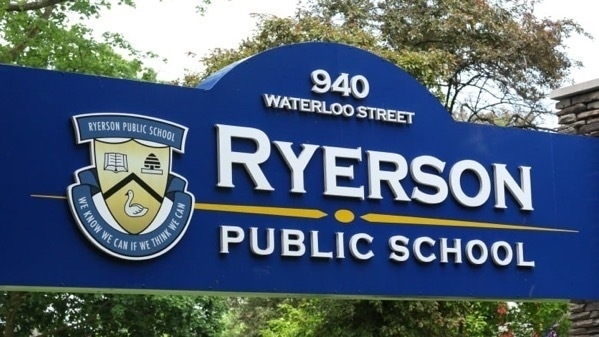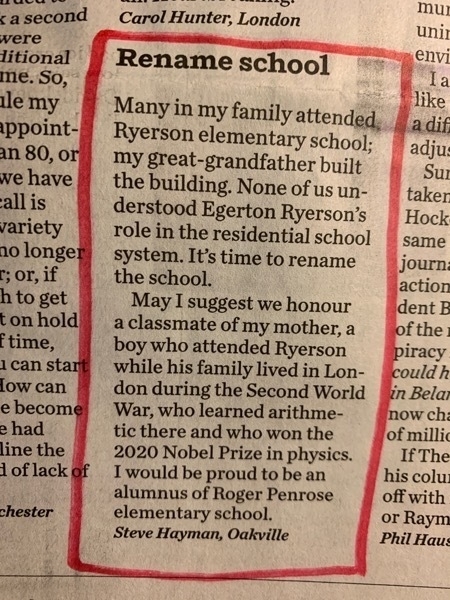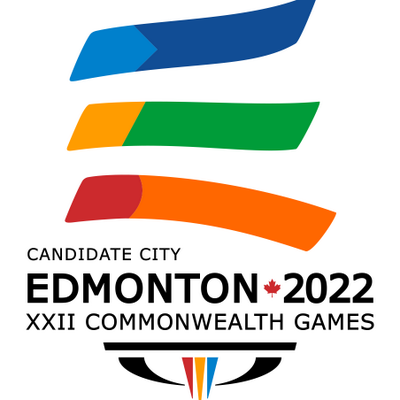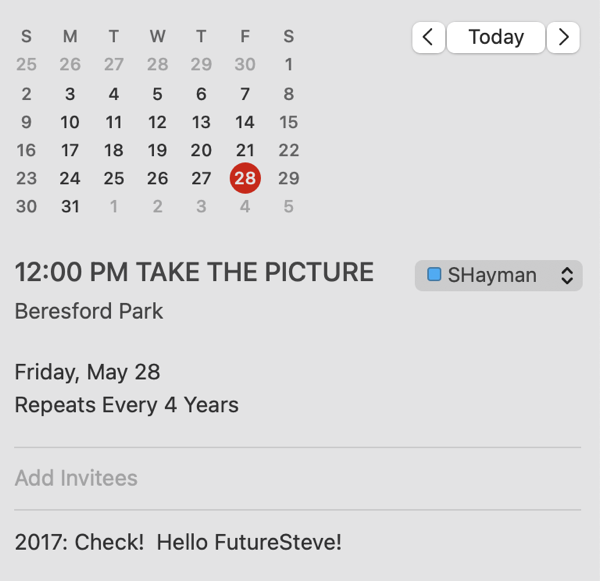On Getting Corrected by Ken Jennings
Yesterday: achievement unlocked. I was personally corrected (on Twitter) by Ken Jennings.
What an incredible honour!
Well, I’d always hoped to be corrected by Ken on the set of Jeopardy! itself, but still, a twitter interaction is a pretty cool alternative.
I mentioned to my brilliant colleague Tom that I’d been corrected by Ken Jennings, and Tom replied “Did he find a way to spell handyman without Hayman?" (good one, Tom.)
But…
I have reviewed yesterday’s Final Jeopardy answer and … Well, I’m not sure Ken Jennings was right to correct me after all. And what fun would the Internet be if we didn’t argue about minutia?
The situation:
Final Jeopardy Category: World Capitals
 The answer is:
The answer is:
AN ANNUAL EVENT CALLED WINTERLUDE INCLUDES SKATING ON THE RIDEAU CANAL, A UNESCO WORLD HERITAGE SITE IN THIS CITY.

(Of course every Canadian immediately shouts “What is Ottawa?")
what is Paris?
Ken gets to the 2nd place contestant. She has written: “What is Paris?”

here's what Ken says
Ken says, and I quote:
"Jennifer, you were in second place, which world capital did you write down? 'What is Paris?'“No, the name is French, but it’s not Paris, so that will cost you something.”
(Remainder of Final Jeopardy unimportant at this point, although Amy Schneider (who also got it wrong, with ‘What is Amsterdam?') won anyway, her fifth win, congratulations!)
wait, what did he say?
So Cathy and I immediately started debating. When Ken said ‘the name is French, but it’s not Paris’… what did he mean? Does he think “Ottawa” is a French name?
It isn’t, of course, “Ottawa” comes from the Algonquin word ‘adawe’, meaning ‘to trade.’
Now what do you do when somebody is wrong? You tweet about it, of course. I immediately composed a tweet, saying
<cough> um @KenJennings “Ottawa” is not a French word. It’s from the Algonquin word “adawe”, meaning "to trade".
— Steve Hayman 💉 💉 💉 (@shayman) November 24, 2021
And, a few minutes later - oh my god, I got a reply from Ken Jennings himself!
“no, but it (Rideau) IS a French word”
— Ken Jennings (@KenJennings) November 24, 2021
(Saving a screen shot for posterity in case either of us deletes something in the future)

I better apologize
Suitably chastened - who am I to argue with Ken Jennings - I apologized.
Aha. You are right, there. Thanks for the clarification.
— Steve Hayman 💉 💉 💉 (@shayman) November 24, 2021
And I then had to wade through multiple tweets from other people. Ken got way more likes on his reply than I got on my original. Apparently a lot of people read all of Ken’s tweets and some feel obliged to reply to me. This one was good.
— Victor Puente (@thevictorpuente) November 24, 2021
Along with other tweets from Ken’s army of followers reminding me that he meant that ‘Rideau’ was a French word. And a few helpful but off topic responses -
Rideau Hall is in Ottawa and it is the Governor General's residence.
— Calli (@DemoneLinda) November 24, 2021
but
This has been nagging at me.
It’s an honour to be corrected by the legend Ken Jennings.
But what actually did he say?
The contestant writes What is Paris? and Ken responds
No, the name is French, but it's not Paris
I think I know what he meant but …. can you not argue that the name and it both refer to the same thing, the correct response (Ottawa) here, not another word in the clue (Rideau)?
It is possible that I actually am right here. Or that we both are.
Not sure I want to risk another Twitter firestorm though!
Ken, if you're reading this
I’ve taken the Jeopardy! test multiple times. Why don’t you call?
Sing the Phone Number!
Here’s a collection of some of my favourite commercials where they sing the phone number. Have been meaning to collect this for a while. Enjoy. If possible.
Poison Control, 1 800 222-1222
On a work trip I was driving through upstate New York and this jingle came on the radio and I thought - wait - did I just hear that correctly?
Stompin' Tom, PEI Tourism. 800 565-7421
Stompin' Tom was a songwriting genius who could seemingly turn out a catchy tune on virtually any topic. Phone numbers? Sure!
Alfie Zappacosta and Syd Kessler for Pizza Nova, 439-0000
This one is epic. EPIC! Especially the bridge where they start singing not just the phone number, but singing ABOUT the phone number! Four Three Nine. Lots of Zeroes.
ITravel2000.com . 1 866 WOW DEAL
The IT Crowd, the new Emergency Number
just dial 0118 999 881 999 119 725 3.
speaking of emergency services
There seems to be a whole genre of emergency service commercials where they sing the phone number.
1 800 267 2001 Alarm Force
1 866 247 4999 The Monitoring Center
Clever phone number. I think the schtick was that you got 24*7 monitoring for $9.99 /month.
Geez I’m having trouble finding this one. Ah here we go. Skip ahead to about 1:50 in this informercial. Catchy!
And in Canada at least, the granddaddy of them all, a commercial that’s been around possibly 50 years (and which they’ve re-recorded as new area codes came online)
Pizza Pizza 967-1111
A phone number jingle so popular that they actually made commercials about how popular the jingle was.
Pennsylvania 6-5000
Actually I suppose the REAL Granddaddy of them all has to be Glenn Miller’s **Pennsylvania 6-5000", the number of the Pennsylvania Hotel in New York City, where the band frequently performed.
I’ll have to dig out the video from Waterloo’s FASS 1985 show where I was the pit band leader, and we warmed up the crowd by playing Pennsylvania 6-5000 except we altered the lyrics to include the university phone number, 885-1211, and of course. 967-1111. At the time it was hilarious. (Although if I watch that video again now, I realize the show was a lot more hilarious for the performers than the audience.)
Finally, I wonder
Back in Alexander Graham Bell’s time frame, I wonder if you’d go to a live performance by John Philip Sousa’s band at the bandshell, and some singers would come out, advertising a nearby restaurant and they’d sing the number…. “Four!”
Bobby Orr and me
Bobby Orr and me. An incomplete story.

50 years ago I - seen here, green striped shirt - got Bobby Orr to autograph his O-Pee-Chee hockey card.
49 years ago I misplaced the card. Somehow.
Just bought a replacement off of eBay. Now, to find Bobby and get it re-autographed. Also need to find a green striped shirt.

so how'd that happen?
Someone told me in grade 7 that if you bought an entire carton of hockey cards, you’d get one of everything. I saved up $10, and bought the carton at the variety store. Richard and Kevin and I then opened them all up, and ate all the gum. And yes you do get one of each.
the gum, you’ll remember, tastes basically the same as the cards.
In the early 1970s, the Boston Bruins would hold their annual training camp in my home town of London, and in 1971 they were all playing at a golf tournament at the Highland Golf Club.
Back then, students in London got a half day off to visit the cows at the Western Fair. So… Richard and Kevin and I hatched a plan. We’d blow off the entire day of Grade 8 and take all our hockey cards - our complete set, wait, MY complete set, out and see if we could get any of them signed. Or maybe we could be caddies. We didn’t know how anything worked.
We got out there and somehow positioned ourselves at the 18th green, and all the Bruins eventually came by, and were mobbed by a small handful of 12 year olds. Esposito. Orr. Cashman. Cheevers. Sanderson. The defending Stanley Cup champs.
I had my cards ready. And a pen, I think. Really planning ahead there. Oh, and my camera, the same Kodak Instamatic 126 that took that Apollo XI picture that I won’t shut up about.
Like for instance here’s me and Derek Sanderson. Thanks Richard or Kevin or whoever took this.

look! it's bobby orr! and phil esposito!
And the final foursome comes over. Bobby Orr. Phil Esposito. Wow. What are they doing here in my town?
here I am apparently ignoring Phil Esposito.
 So - those trees in the background? One of them was an apple tree. Phil Esposito goes over to the apple tree to pick up a post-golf snack. Picks a couple of apples.
So - those trees in the background? One of them was an apple tree. Phil Esposito goes over to the apple tree to pick up a post-golf snack. Picks a couple of apples.
the apple
Phil Esposito hands one of these apples to Bobby Orr, who is in the middle of autographing my hockey card, as seen here in this not exactly perfectly composed photo.

Bobby Orr, the greatest hockey player of all time, then
• takes a bite out of the apple • doesn’t like it • turns to me • hands me the apple core and says • “Here, kid, would you throw this out for me?”
huuuuuh yes sir oooooh yes i will huuuuh
No, I didn’t keep the apple. I should have. Imagine what it’d be worth on eBay now. But I threw it out, because when Bobby Orr asks you to do something, you do it, no questions asked.
(Let me add that about 20 years ago I was in Tampa for work, and actually ran in to Phil Esposito at the airport, and told him this story about the apple, and he couldn’t have been less interested in it, which is something you and he probably have in common)
So anyways I got my hockey cards autographed by all the greats. And carefully set them aside, in the torn remains of the original carton from the variety store.
so what happened to the autographed cards?
ok I might not have ‘carefully’ stored them away.
I heard of a sports memorabilia store with a sign behind the counter saying “We charge $50 to listen to the story of how your parents threw them all away.”
i am not blaming anybody
i could have stored them better
i could have been more clear about what exactly was in the box
I still have most of that set. Somehow I set the Stanley Cup Champion Boston Bruins autographed ones aside, intending, I’m sure, to store or display them properly.
I still have the Sheldon Kannegiesser card for instance, sadly, unautographed.
anyway it’s been bugging me for almost 50 years. In a sort of circle-of-life moment, one of the things I demo at work these days is an Augmented Reality app I wrote where I can point the camera at a hockey card, and it overlays some statistics on top. That’s kind of cool.
so … this week, I spent significantly more than that entire set cost me, just to get one slightly used 1971-72 O-Pee-Chee Bobby Orr card, as seen here. Now I just need to track down Bobby and the circle will be complete.
I hope he remembers the part about the apple.

update
Update: Bobby’s team replies that he will happily autograph this card for US$100.
I don’t remember autographs costing quite that much back in 1971.
The John Davidson Show
In 1981 I was actually interviewed on “The John Davidson Show”. You probably missed it.
What to do about the name "Ryerson Public School"? How about "Roger Penrose Elementary"?

update January 26 2022
The board decided to go with “Old North Public School.” Here’s the London Free Press article.
original post below.
I went to Ryerson Public School (kindergarten through grade 3), two blocks from home in London, Ontario. So did my siblings. And my mom. And many others in our Old North London family.
That’s not the only connection - my great-grandfather led the John Hayman and Sons Construction Company, who built Ryerson in 1916.
I didn’t know who “Ryerson” was at the time. It never came up. Nobody said anything about it that I can remember.
Now we all know a little more about Egerton Ryerson, who not only lobbied for public education in Ontario, but also was involved in the shameful legacy of the Residential School system.
It’s time to rename the school. You know what would be a perfect choice?
How about naming it after a young boy who
- lived in London with his family during World War II;
- was - probably - a classmate of my mother's at the time;
- learned basic arithmetic there
- became one of the most famous mathematicians of the past 100 years, and
- won the 2020 Nobel Prize in Physics (for "the discovery that black hole formation is a robust prediction of the general theory of relativity".)
Wait, what? A kid from Ryerson won the Nobel Prize in Physics?
How could you NOT rename it after someone like that?
Let’s call it Roger Penrose Elementary School. Let’s tile the floor with Penrose tiles - one of his discoveries of two tiles that can only tile the plane nonperiodically. (Us mathies get excited about things like that.) Here’s an example of a Penrose Tiling

And here’s Roger Penrose at Texas A&M where they’ve done the floor that way!

Those oddly patterned tiles might be tricky, but I know a construction company that would rise to the challenge.
p.s. I know you’ll all see it when your copy arrives on the doorstep, but I wrote a Letter to the Editor of my hometown paper, the London Free Press, about this. I would have written more, but their web form only allowed 500 characters.

People of Edmonton, I've got your back. Even if you don't notice.
You might have heard that the Edmonton Football Team - until recently, the Edmonton Eskimos - has changed its name to the Edmonton Elks, and I like this change. It’s a great logo, it retains the historic “EE” abbreviation too.

Plus Elks was actually the team name for a couple of years in the 1920s. Good choice!
The old name was unsustainable - you could argue, I suppose, about whether it was intended to honour the Inuit people, but it’s just not appropriate any more. I’m glad they changed it, and they did a great job with the big reveal this week. Check out the video!
update from 2025: alas, the video is private now.
Cleveland Indians. Atlanta Braves. Kansas City Chiefs. Washington “Football Team”. See? That was easy. They’re selling a ton of new merch. What’s holding you back?
i knew this would happen
here’s the thing: I knew this was going to happen. Six years ago, in fact.
I registered the Twitter account @EdmontonElks in 2015,just in case. The team had been using @Esks for their account, and seeing as how I’m a kind, considerate CFL fan, who wants the best for the league, and who knows that people sometimes hold useful Twitter names for unreasonable ransom, I wanted to make sure it would be available.
I fully intended to turn this @EdmontonElks account over to the team, if they decided to become the Elks; if they’d gone for Energy or Empire or one of the other suggestions, no problem, I’d just forget about @EdmontonElks.
Last summer the rumblings began that the team might change its name. I sent an email, offering @EdmontonElks to them.
Heard nothing. Crickets.
This week they changed the team name, and for a while were still using @EdmFootballTeam on Twitter. I sent another note to the team president. Hey, you can have this account for free, no strings attached.
More crickets.
But the @EdmontonElks account was getting the occasional misdirected tweet from people who thought @EdmontonElks really was the team account.
Then - a couple of hours after the grand name unveiling - the team unveiled their new twitter identity: they had secured @Elks and that was their Twitter handle going forward. I don’t know who had that one before. The Elks Club, maybe? I bet they had to pay somebody for that name. Short, memorable Twitter handles are tough to come by.
I’ve still heard nothing - and @Elks is certainly a better account name than @EdmontonElks, so perhaps they don’t need it. But the offer still stands. Edmonton Elks, you can have this twitter account just for the asking. Otherwise, I guess I’ll just let it sit there, unused.
oddly enough, I had another edmonton twitter sports account
Incidentally at one point, a decade ago, Edmonton was bidding for the 2022 Commonwealth Games, and I noticed they had registered @Edmonton2022 on Twitter and the edmonton2022.com domain name.
But - the city abandoned the bid and refocused on 2026. So guess who happened to register @Edmonton2026 and edmonton2026.com? This time, though, I did manage to transfer the twitter handle and the domain to the City of Edmonton, again, no strings attached.
People of Edmonton, I’ve got your back.
Elks, if you want that twitter account, just ask. (And if you wanted to send me a hat, I wouldn’t say no. Geez, the antlers. You could really make awesome hats.)

Canada/USA Border Trivia
The border between Ontario and the USA is 2,760 km long, from the Ontario/Quebec/New York end in the east to the Ontario/Manitoba/Minnesota end in the west.
2,760 km.
How much of that is over water, and how much over land? Well, let’s see. from East to West we’ve got
- the St. Lawrence River
- Lake Ontario
- the Niagara River
- Lake Erie
- the Detroit River
- Lake St. Clair
- the St. Clair River
- Lake Huron
- the Whatever it is River in Sault Ste. Marie - excuse me, that'd be the "Saint Mary River"
- Lake Superior ...
And then an amazingly convoluted 880 km route, initially following the Pigeon River between Ontario and Minnesota, extends all the way to the Northwest Angle.
Seriously you should look at how convoluted that route is. The 1789 Treaty of Paris, which ended the Revolutionary War, defined the border.
The St. Lawrence/Great Lakes part was pretty easy - let’s just go right up the middle, let’s give all of Lake Michigan to the Americans but we only get half of Lake Ontario for some reason - but the route westward from Lake Superior must have been harder to define. Fortunately there were well-known routes that the voyageurs in their canoes had previously established.
But is it really all water?
Amazingly, no, it isn’t all water.
land borders between Ontario and Minnesota
I know of at least three spots where Ontario and the USA share a land border. Two of them are in northwest Ontario, where there is a brief portage between one lake and another. Here’s one.

There’s another one up there. Go find it.
But how about this third one
land border between Ontario and New York State
I suspect most people think the border at Niagara Falls zips right down the middle of the Horseshoe Falls - but it doesn’t. It cuts REALLY close to Goat Island on the American side. 99% of the Horseshoe Falls is in Canada but if you look really closely at the border line itself …

See it? Right there at the base of the falls on the US side? The border cuts through a few of the rocks piled at the bottom of the falls, and assuming those are dry, THAT is a land border between Ontario and New York.
Good luck crossing at that point though.
while we're at it
Everybody knows that if you go south out of Detroit, you get to Windsor.
Fewer people realize just how far Ontario stretches in a North - South direction.
There are places in Southern Ontario that are south of places in California, and there are places in Northern Ontario that are north of places in Alaska.
Every 4 Years. but not this year.
I’m sad today. But happy. In a nostalgic-sad-happy kind of hybrid way.
This is in my calendar right now. An event that repeats every 4 years, along with a message from me in 2017. I like leaving myself messages in the calendar to read in the future.

So what’s going on?
We used to live 3 doors down from a little park and one day - specifically, May 28, 1997 - I took this picture of the lads on a bench there.
may 28 1997

I liked that picture a lot. I still do. So 4 years later we strolled down to the park to take the same picture on the same bench.
may 28 2001

The astute viewer will note that child #2 is wearing the shirt that child #1 was wearing in the 1997 picture. That was a complete coincidence, and somehow I forgot to continue this trend. But we kept returning to that bench, and taking the picture again, every four years.
may 28 2005

By this point I’d started putting the series of pictures in a nice frame, and giving a copy to various relatives. And the photos continued.
may 28 2009

Number 1’s in high school now and is wearing his Ursula Franklin Academy shirt. I think they moved the bench in the park by 50 feet so the angle was no longer quite right, but we kept going.
may 28 2013

By this point I’m starting to become exceedingly grateful that they’re still willing to go along with this.
may 28 2017

We’d moved to Oakville, but returned to Beresford Park to take the picture again, and the photographer may have been a little overcome with waves of nostalgia. (Along with regret that we didn’t continue the hand-me-down-shirt routine but these guys are getting all grown up now …)
may 28 2021
Today’s the day.
I have been staring at my calendar all week wondering if we can pull off the “Every Four Years” picture this year.
But I don’t think we can. For one reason - you know, global pandemic, nobody should be travelling, Ontario still in lockdown.
For another - both of the subjects have jobs and are working today and have moved away, one’s a two hour drive, one’s a four hour drive, and the logistics are getting too complicated.
Also it’s raining.
I think we might bend the rules a bit, what with there being a pandemic and all. The next time they’re both in town, I’ll see if they’re willing to take a little drive to Beresford Park and see if the bench is still there, and I’ll bring my camera, and take another 200 pictures in the hopes that 2 or 3 turn out well, and I’ll print Photo #7 and find an even bigger frame to add it to ….
but it won’t be the same somehow.
time marches on. Take lots of pictures of your kids. They grow up awfully fast.
UPDATE
well we managed this on the evening of May 28 2021, at least. In this pandemic year of craziness, it’ll do!
